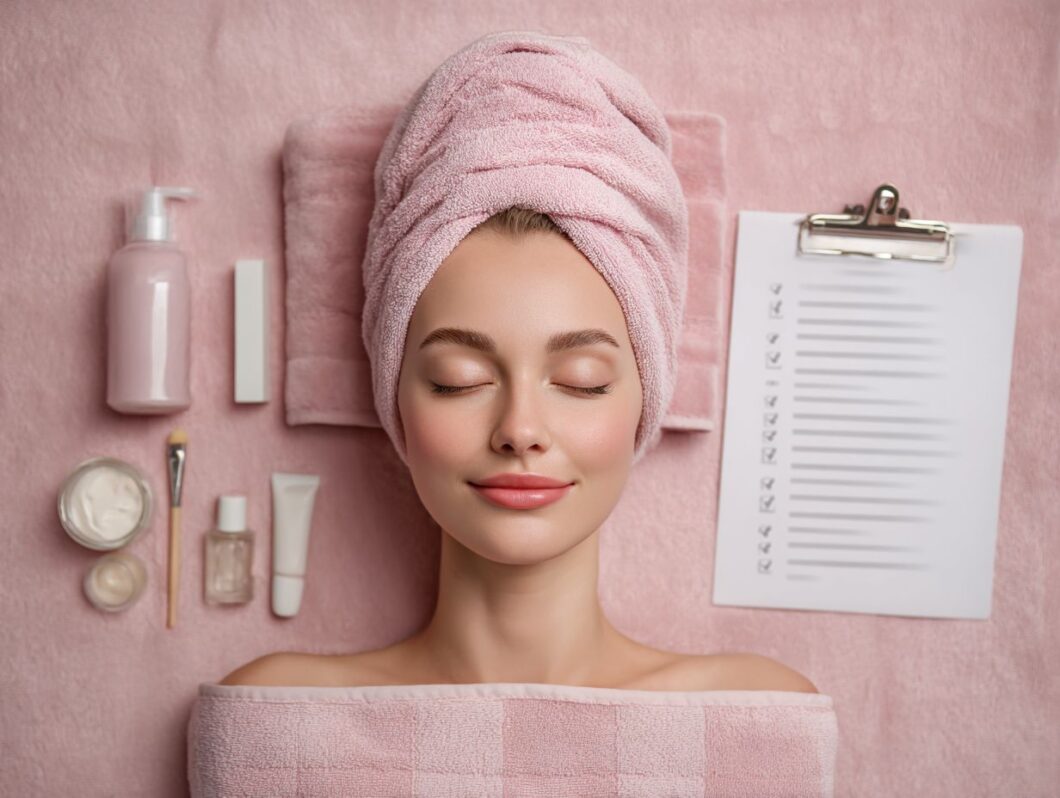Introduction
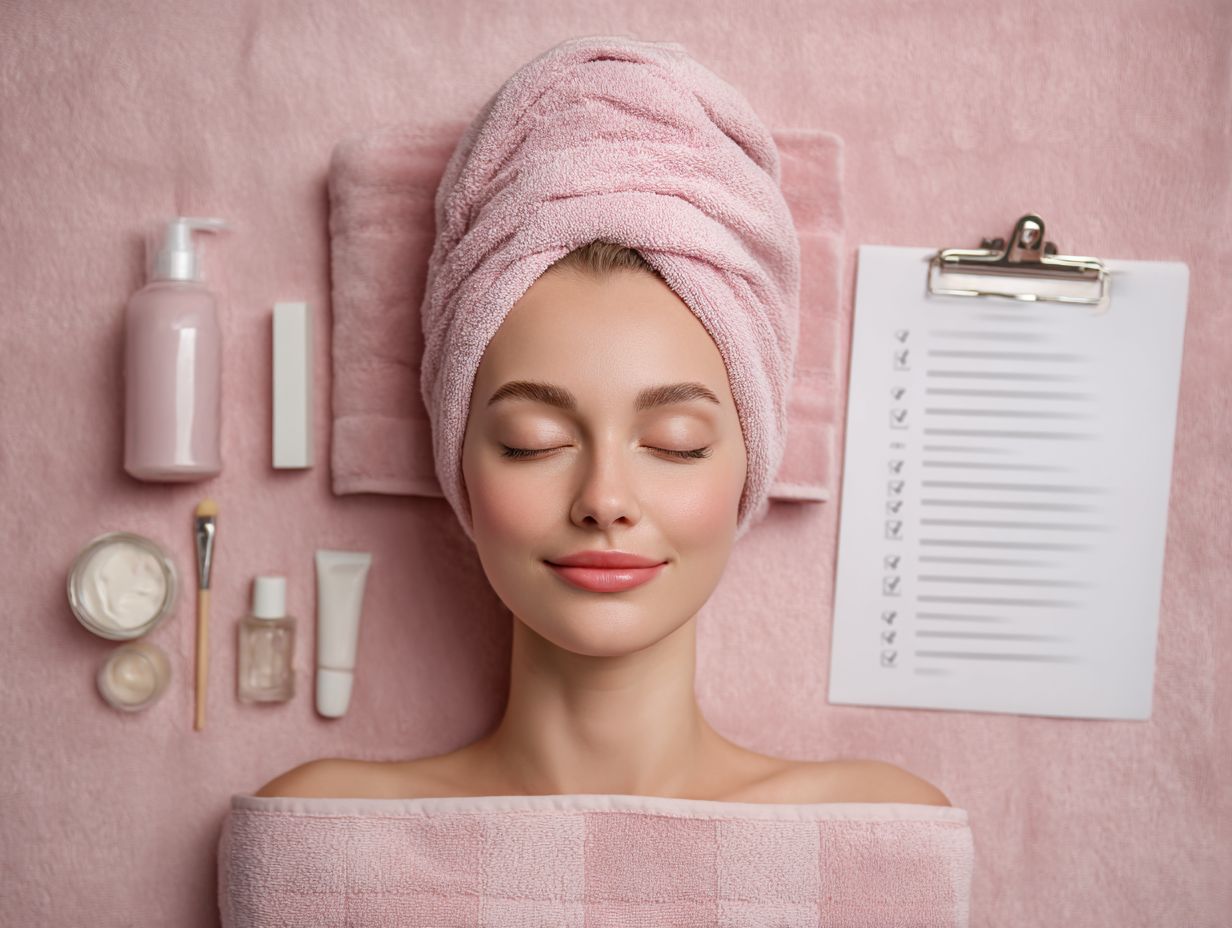
After indulging in a rejuvenating facial treatment, your skin deserves the best care possible. However, certain missteps can undermine your results. Experts like Meghana Prasad and Sejal Shah emphasize avoiding specific products and practices that could compromise your skin’s health in the crucial hours that follow. In this article, we’ll outline the five things you should never do after a facial, ensuring your skin remains radiant and well-nourished.
After indulging in a rejuvenating facial, your skin deserves the best care possible. However, certain missteps can undermine your results. Experts like Meghana Prasad and Sejal Shah emphasize avoiding specific products and practices that could compromise your skin’s health in the crucial hours that follow. In this article, we’ll outline the five things you should never do after a facial, ensuring your skin remains radiant and well-nourished.
Key Takeaways:
Avoid Direct Sun Exposure
Following your aesthetician’s advice, prioritize protecting your skin from UV rays, particularly after receiving a facial, as this practice significantly reduces skin sensitivity and helps prevent damage.
I prioritize protecting my skin from UV rays, particularly after receiving a facial treatment, as this practice significantly reduces skin sensitivity and helps prevent damage.
Why UV Protection is Crucial
After any spa session, UV rays can significantly increase skin sensitivity, resulting in issues such as sunburn and hyperpigmentation, particularly after treatments that open the pores.
UV rays can significantly increase skin sensitivity, resulting in issues such as sunburn and hyperpigmentation, particularly after treatments that open the pores.
To safeguard my skin following a facial treatment, I ensure that I apply a broad-spectrum sunscreen with a minimum of SPF 30, even on overcast days. Dermatologists advise reapplying sunscreen every two hours, especially if I’m sweating or swimming.
I also consider wearing protective clothing, such as a wide-brimmed hat and sunglasses, to shield delicate areas. Incorporating antioxidants, like vitamin C serums, is another step I take to help reduce UV damage.
It is always important for me to discuss post-facial care with my skincare professional to create a routine tailored to my skin type and treatment history.
Recommended Sun Protection Products
Recommended by facialists, these products are essential for effective sun protection post-facial.
To effectively protect my skin, I follow dermatologists’ recommendations and use broad-spectrum sunscreens with a minimum SPF of 30 that are non-comedogenic.
One option I consider is Neutrogena Ultra Sheer Dry-Touch SPF 50, which is priced around $10. It offers a lightweight texture and is water-resistant for up to 80 minutes.
Another excellent alternative is EltaMD UV Clear Broad-Spectrum SPF 46, which retails for approximately $40. This sunscreen is specifically formulated for sensitive or acne-prone skin and includes soothing ingredients like niacinamide alongside its sun protection.
I always ensure to apply sunscreen generously to all exposed areas of my skin, ideally 15 minutes prior to sun exposure. Additionally, I make it a point to reapply every two hours or immediately after swimming or sweating to maintain maximum effectiveness.
Don’t Skip Moisturizing
To maintain skin hydration and maximize the results from your facial, don’t skip using a daily moisturizer.
I recognize that moisturizing is essential for replenishing lost hydration and maintaining the integrity of the skin barrier, especially following a facial treatment.
Importance of Hydration Post-Facial
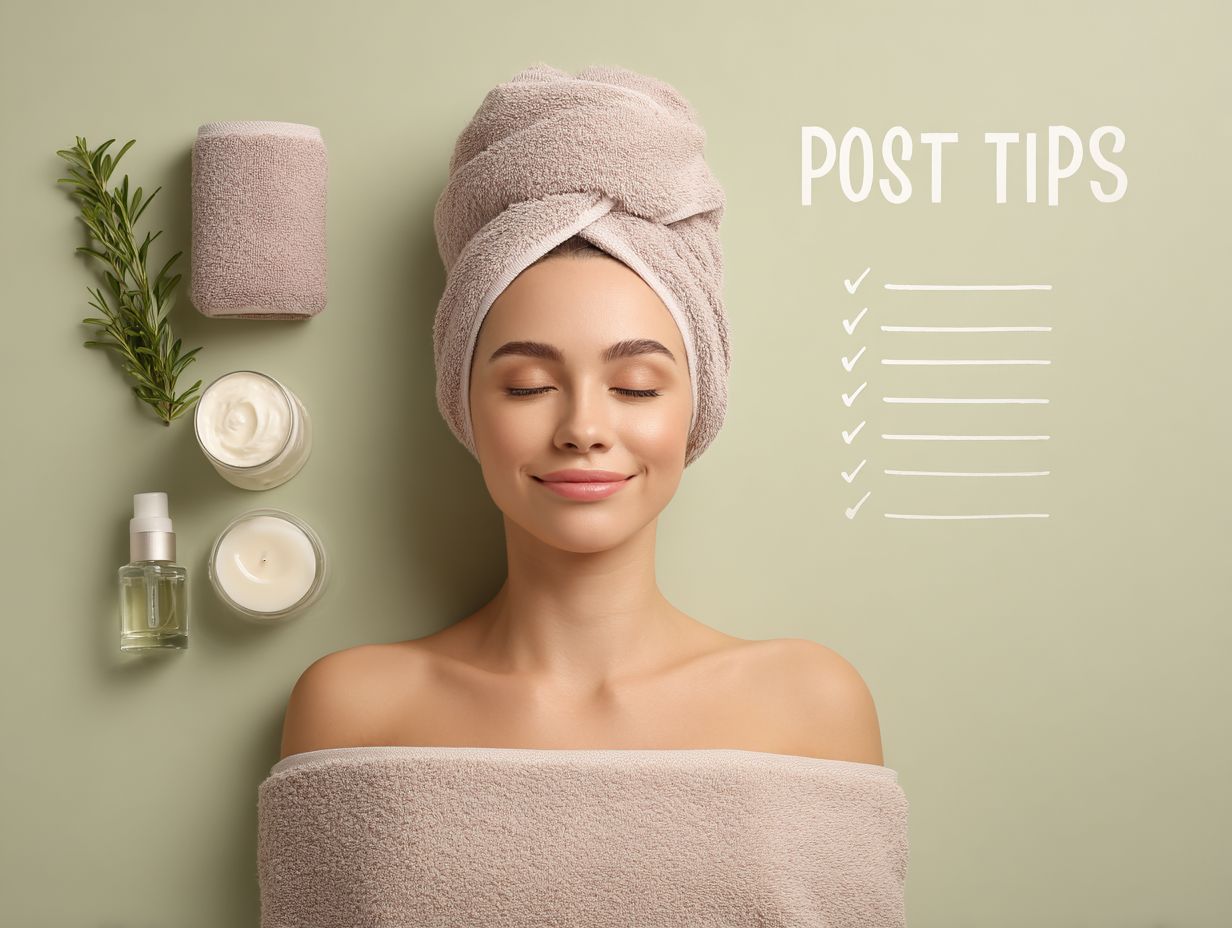
Post-facial hydration is essential for supporting the skin barrier, aiding in healing and moisture retention, which is particularly important for individuals with sensitive skin types.
Post-facial hydration is essential for supporting the skin barrier, aiding in healing and moisture retention, which is particularly important for individuals with sensitive skin types.
I have found that maintaining well-hydrated skin can significantly reduce the risk of breakouts and redness. A study published in the Journal of Investigative Dermatology indicates that well-hydrated skin enhances its barrier function and resilience, thereby helping to prevent irritation.
To achieve optimal hydration, I recommend incorporating a quality moisturizer with hyaluronic acid into your daily skincare regimen, as it can hold 1,000 times its weight in water. Additionally, consider using serums rich in hyaluronic acid for better results.
Additionally, ensuring adequate water intake and using a humidifier in dry environments can further enhance skin hydration, leading to a smoother and clearer complexion.
Best Moisturizers to Use
Certified by dermatologists, these moisturizers are recommended for post-facial hydration.
For optimal post-facial hydration, I recommend using moisturizers that are rich in hyaluronic acid and natural oils, as they are highly effective at locking in moisture.
One excellent option is the Rhonda Allison Hydration Cream, which contains 15% hyaluronic acid that provides deep hydration without a heavy feel. Another great choice is the Eminence Organics Coconut Age Corrective Moisturizer, which utilizes coconut oil and shea butter to nourish and soothe the skin, making it particularly suitable for sensitive skin types.
Both of these products feature gentle, organic ingredients that help minimize the risk of irritation. For the best results, I advise layering your moisturizer over a hydrating serum to enhance moisture retention and maximize the benefits of these formulas.
Refrain from Touching Your Face
According to beauty writer Joshua Zeichner from Mount Sinai Hospital, avoiding face-touching immediately after a facial is essential to prevent the transfer of bacteria and oils, which can lead to breakouts and irritation.
I recognize that avoiding face-touching immediately after a facial is essential to prevent the transfer of bacteria and oils, which can lead to breakouts and irritation.
Effects of Bacteria and Oil Transfer
According to dermatologists, touching your face can introduce bacteria and oils, which increases the risk of breakouts and bacterial infections, particularly on freshly treated skin.
Touching my face can introduce bacteria and oils, which increases the risk of breakouts and bacterial infections, particularly on freshly treated skin. Studies indicate that individuals tend to touch their faces an average of 16 times per hour, and this habit can worsen skin issues post-facial, such as acne or irritation.
To minimize these risks, I make it a point to use a clean towel to pat my skin dry and avoid touching my face for at least 24 hours following any treatment. I also find that using tools like a gentle toner with witch hazel helps maintain the integrity of my skin’s barrier.
Additionally, I prioritize regular handwashing and adhere to a strict hygiene routine, which significantly reduces the likelihood of complications.
How to Keep Your Hands Away
Facialists recommend implementing practical strategies to minimize face-touching, thereby promoting better skin health after a facial.
Implementing practical strategies allows me to minimize face-touching, thereby promoting better skin health after a facial.
I start by using fidget toys to keep my hands occupied. Wearing fitted gloves also serves as an effective physical reminder to avoid touching my face. Additionally, applying a strongly scented hand cream can deter unwanted contact, as the scent prompts me to keep my hands away.
I find it helpful to utilize a habit-tracking app like Habitica or Streaks to monitor my progress. By setting daily goals and celebrating small victories, I can maintain my motivation. Combining these strategies significantly reduces my habit of touching my face and enhances the overall benefits of my skincare routine.
Say No to Heavy Makeup
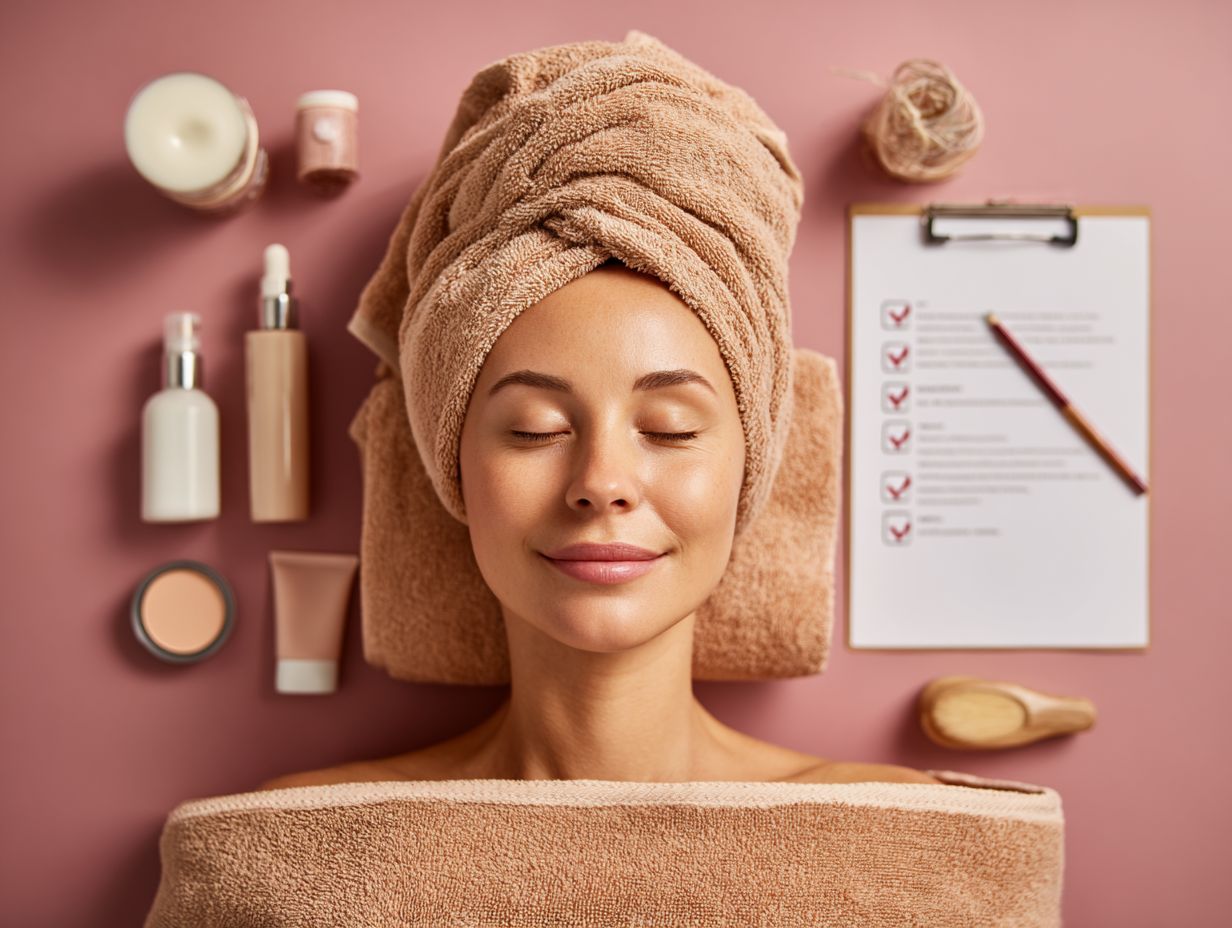
After a facial, I understand that my skin needs time to breathe. This makes it essential for me to avoid heavy makeup that could clog my pores and irritate my sensitive skin.
After a facial, I understand that my skin needs time to breathe. This makes it essential for me to avoid heavy makeup that could clog my pores and irritate my sensitive skin.
Why Your Skin Needs to Breathe
Makeup can hinder my skin’s recovery by clogging pores and obstructing the healing process initiated during facial treatments. To optimize recovery, I prioritize allowing my skin to breathe, which means avoiding makeup for at least 48 hours after the treatment.
I recognize that heavy makeup can hinder my skin’s recovery by clogging pores and obstructing the healing process initiated during facial treatments. To optimize recovery, I prioritize allowing my skin to breathe, which means avoiding makeup for at least 48 hours after the treatment.
I choose to use gentle cleansers and moisturizers that feature soothing ingredients like aloe vera or chamomile. If I am prone to breakouts, I consider incorporating products with salicylic acid to help keep my pores clear.
I always consult with my skincare professional to customize my aftercare routine, as individual needs can vary. They provide invaluable recommendations based on my specific treatment to ensure the best results.
Light Makeup Alternatives
For aesthetician-recommended, lightweight, mineral-based makeup products that offer a natural finish while allowing my skin to breathe after a facial, two brands I highly recommend are bareMinerals and RMS Beauty.
I find that choosing lightweight, mineral-based makeup products can offer a natural finish while allowing my skin to breathe after a facial. Two brands I highly recommend are bareMinerals and RMS Beauty.
bareMinerals provides the Original Loose Powder Foundation, priced at approximately $34. This product offers buildable coverage and includes SPF for added protection. On the other hand, RMS Beauty’s Un Cover-Up, which costs around $36, serves dual purposes as both a foundation and concealer, delivering a dewy finish without feeling heavy on the skin.
For application, I prefer using a soft, damp makeup sponge to gently press the product into my skin. This technique not only minimizes irritation but also helps achieve a flawless look that feels weightless.
Avoid Hot Showers and Baths
According to estheticians, hot showers can exacerbate skin sensitivity following a facial. The elevated skin temperatures from the heat can lead to increased redness and irritation, which is why I recommend avoiding them after such treatments.
I understand that hot showers can exacerbate skin sensitivity following a facial. The elevated skin temperatures from the heat can lead to increased redness and irritation, which is why I recommend avoiding them after such treatments.
Impact of Heat on Skin Post-Facial
Following the dermatologist advice, exposure to heat can lead to vasodilation, which may cause increased redness and swelling in sensitive skin following a facial treatment. To facilitate my skin’s recovery, I consider implementing the following actionable tips:
Exposure to heat can lead to vasodilation, which may cause increased redness and swelling in sensitive skin following a facial treatment. To facilitate my skin’s recovery, I consider implementing the following actionable tips:
- First, I apply a cooling gel or aloe vera to soothe the affected areas, as these products possess anti-inflammatory properties that can help alleviate redness.
- Next, I ensure that my environment remains cool by utilizing a fan or air conditioning, particularly in the hours immediately following the treatment.
- Staying hydrated is key, so I make it a point to drink plenty of water to support my skin’s health.
- I also avoid hot showers or baths for at least 24 hours, as they can worsen the situation.
By following these steps, I can promote healing and enhance comfort for my skin. For added relief, consider using hydrating products like the Neutrogena Hydroboost Hydrogel Sheet Mask.
Recommended Water Temperature
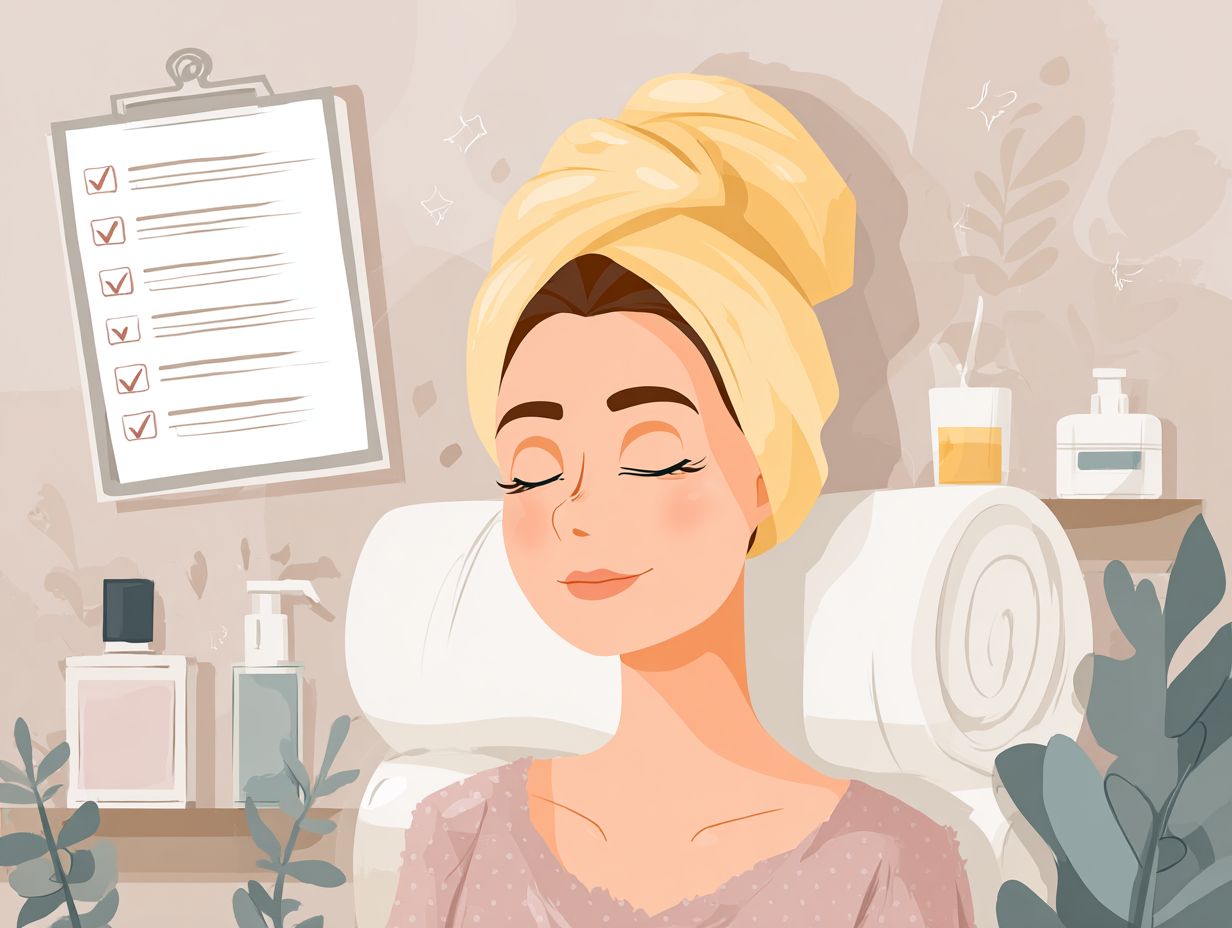
I recommend using lukewarm water, ideally around 98 degreesF, for washing my face or showering after a facial in order to preserve skin comfort. This temperature helps maintain the delicate balance of my skin following the treatment.
I recommend using lukewarm water, ideally around 98 degreesF, for washing my face or showering after a facial in order to preserve skin comfort. This temperature helps maintain the delicate balance of my skin following the treatment.
To ensure accuracy, I find a digital thermometer to be invaluable; the Taylor Precision Products Digital Thermometer is particularly useful for obtaining precise readings during facial treatment sessions.
I also steer clear of hot water, as it can lead to inflammation and irritation. Instead, I always pat my skin dry with a clean, soft towel rather than rubbing it, which helps maintain the healthy radiance of my skin.
By incorporating these practices, I can enhance the effectiveness of my facial treatment, ensuring my skin remains hydrated and calm. Using a gentle SPF lotion also helps protect your skin.
Frequently Asked Questions
1. What are the top 5 things I should never do after a facial?
After a facial, it is important to avoid touching or picking at your skin, using harsh products, exposing your face to direct sunlight, sweating excessively, and applying heavy makeup. A hydrafacial treatment can also help in maintaining clear pores free from blackheads and whiteheads.
2. Can I touch my face after a facial?
No, it is best to avoid touching your face after a facial. Your skin may be more sensitive and prone to irritation, and touching it can transfer dirt and bacteria to your freshly cleaned pores. Instead, focus on using gentle cleansing products to keep your skin clear.
3. Is it safe to use any skincare products after a facial?
It is safe to use gentle and non-irritating skincare products after a facial, but it is best to avoid using any harsh products that may irritate your skin. Stick to hydrating and soothing products from brands like Rhonda Allison or Eminence Organics to maintain the benefits of your facial.
4. What should I do if I accidentally get a sunburn after a facial?
If you get a sunburn after a facial, it is important to immediately apply aloe vera gel or a cold compress to soothe the burn. Avoid any further sun exposure and make sure to keep your skin hydrated with products like the Neutrogena Hydroboost Hydrogel Sheet Mask.
5. How soon after a facial can I start exercising or sweating?
It is recommended to wait at least 24 hours after a facial before engaging in any intense exercise or activities that may cause excessive sweating. This allows your skin to fully heal and prevents any potential irritation. Experts like Sejal Shah and Joshua Zeichner from Mount Sinai Hospital advise this period for optimal skin care.
6. Is it okay to wear makeup immediately after a facial?
It is best to avoid wearing heavy or pore-clogging makeup immediately after a facial. If you must wear makeup, opt for light and breathable products that won’t suffocate your skin and interfere with the benefits of your facial. Consider visiting a spa like Thai Square Spa or milk + honey spa for professional advice on post-facial care.


